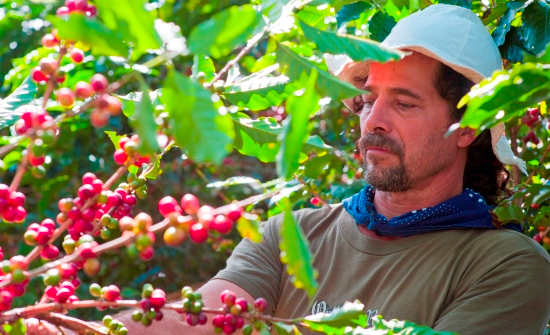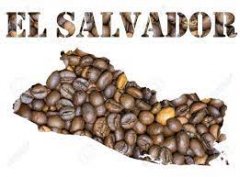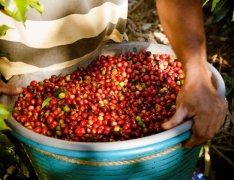Introduction to the characteristics of manor honey treatment in Costa Rica coffee producing area what is the flavor and taste quality of Costa Rican coffee beans
You've heard of Costa Rica's wildlife, lush rainforests and breathtaking beaches, all of which make it famous around the world. However, there is another reason to add Costa Rica to your travel list: coffee. In addition to winning prestigious awards at international competitions, Costa Rican coffee has become more than just an economic boost to local culture. This short guide will show you where to enjoy this delicious tradition on your next trip. If you are interested, please follow the front street to read some history, frequently asked questions and places about Costa Rica coffee culture.

Costa Rica offers the ideal combination of conditions for producing high-quality coffee beans: high altitude, fertile volcanic soil combined with cool climate and stable rainfall produces coffee beans with excellent flavor and aroma. Coffee grown in the Tres Rios region near the Pacific coast is mild, sweet and bright. Tarrazu, located in the mountainous interior of Costa Rica, produces coffee that is heavier and more complex in aroma (Knox, 53). La Minita is Costa Rica's most sought-after coffee. Coffee Source produces coffee in the Tres Rios, Doka and Tarrazu regions. Each Costa Rican coffee plantation listed in this source is a model of ecological and social excellence. They sell delicious coffee beans, as well as organic coffee beans.
Espírito Santo
Located in the town of Naranjo, just outside San Jose, this 600-acre coffee plantation offers immersive, detailed tours of the Hacienda Espíritu Santo facility. The journey is divided into 7 stops, from the first step in maintaining coffee crops to their showrooms or cabins, where you'll see Costa Rica's traditional way of brewing coffee-or café chorreado. Continue to learn about the harvesting and roasting process and all the work involved in producing coffee beans. You will also learn about the evolution of its production process, as well as the role of the ox cart, the national symbol, and how it was used as a means of transporting coffee.
Finca Rosa Blanca Coffee Plantation Tour
Finca Rosa Blanca is a boutique style hotel that gives guests the opportunity to explore their famous coffee plantations. This is a fun event located in the Greater Central Valley area less than an hour from San Jose International Airport. With views of the nearby volcanoes, the beautiful green surroundings make this a relaxing way to enjoy a real Costa Rican vacation. Learn how organic coffee is grown, harvested, dried and processed. During harvest season-from October to January-you can even participate in picking! If you want to take your love of coffee to the next level, this tour will show how experts test and rate delicious coffee. Practice your skills at the coffee bar and do what you like best! After learning so much, breathe the fresh air of the Central Valley while relaxing and taking a seat on the spacious deck.
doka estate
Located on the slopes of Mount Poaz, Estates Doka is one of Costa Rica's largest coffee and sugar cane plantations. This family-owned business represents the agricultural heritage and the history of the country, and according to UNESCO you will find here the oldest wet mill in the country. Enjoy a guided walk around the charming hotel and note down all the steps to make quality coffee.

Alsasia Manor
Hacienda Alsacia, located at the foot of a volcano in Costa Rica, is Starbucks 'first and only coffee farm. Despite its large corporate structure, Starbucks aims to make coffee growing more profitable on small-scale farms, learn more about the daily struggles coffee farmers face, develop the next generation of disease-resistant, high-quality coffee, and share resources and information with farmers around the world. They also want to be at the forefront of sustainable farming practices.
Coffee Plantation in Santa Maria Dota
Santa Maria- Dota's Coffee Plantation Start a full day experience at Santa Guana Lodge, on the South Pacific coast. Get aboard a 4×4 vehicle and wake up to your adventure! Climb the ridge of Fila Chonta at Tarrazú. Arrive at the coffee plantations of the Los Santos region, considered the best coffee in Costa Rica.
Important Notice :
前街咖啡 FrontStreet Coffee has moved to new addredd:
FrontStreet Coffee Address: 315,Donghua East Road,GuangZhou
Tel:020 38364473
- Prev

History of the coffee industry in El Salvador History of coffee growing in El Salvador
Warm, cool climates, hard working days and high-quality coffee beans are part of the elements surrounding the national coffee-growing world that are now being transferred to the new Salvadoran café brand launched by the Salvadoran government. Through the Ministry of Agriculture and Livestock (MAG) and the Salvadoran Coffee Council (CSC). Caf de El Salvador
- Next

Las Haras, Costa Rica, baking degree and flavor of hand-picked coffee beans 100% Arabica
The growing environment of Costa Rican coffee beans: Costa Rica has a unique advantage in producing high-quality coffee beans with excellent aroma and flavor due to its high altitude, fertile volcanic soil, warm temperature, stable rainfall and tropical climate. Arabica coffee beans come from delicate plants and require specific climatic conditions to thrive, including high altitude and temperature.
Related
- Detailed explanation of Jadeite planting Land in Panamanian Jadeite Manor introduction to the grading system of Jadeite competitive bidding, Red bid, Green bid and Rose Summer
- Story of Coffee planting in Brenka region of Costa Rica Stonehenge Manor anaerobic heavy honey treatment of flavor mouth
- What's on the barrel of Blue Mountain Coffee beans?
- Can American coffee also pull flowers? How to use hot American style to pull out a good-looking pattern?
- Can you make a cold extract with coffee beans? What is the right proportion for cold-extracted coffee formula?
- Indonesian PWN Gold Mandrine Coffee Origin Features Flavor How to Chong? Mandolin coffee is American.
- A brief introduction to the flavor characteristics of Brazilian yellow bourbon coffee beans
- What is the effect of different water quality on the flavor of cold-extracted coffee? What kind of water is best for brewing coffee?
- Why do you think of Rose Summer whenever you mention Panamanian coffee?
- Introduction to the characteristics of authentic blue mountain coffee bean producing areas? What is the CIB Coffee Authority in Jamaica?

